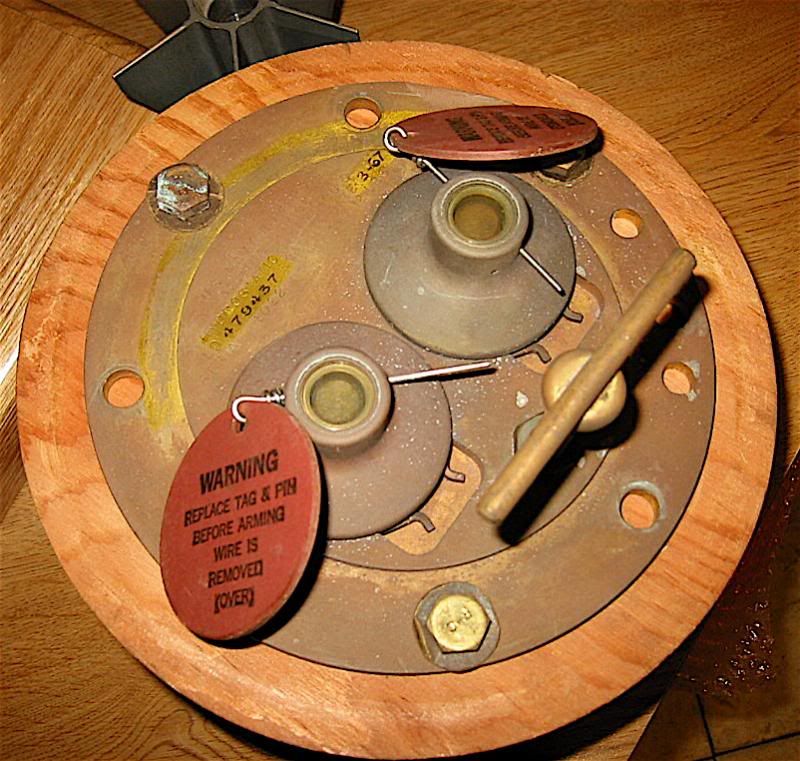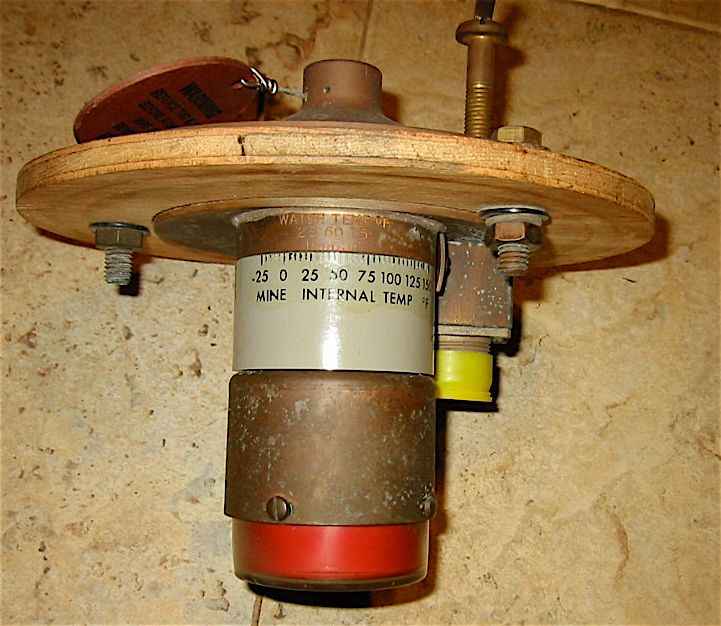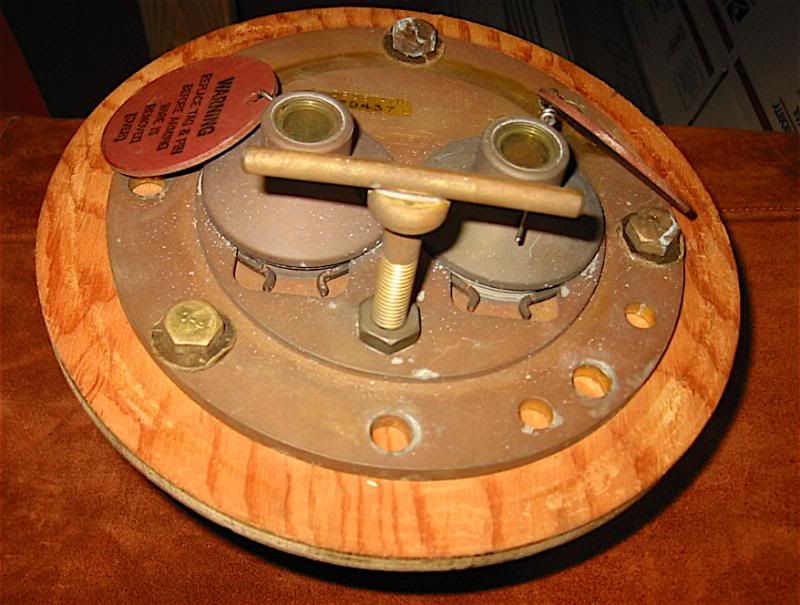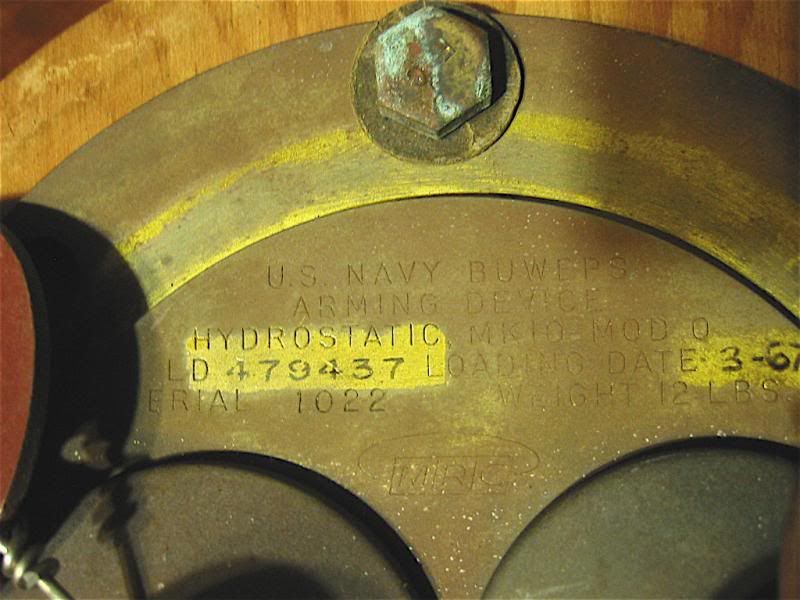apfsds
Well-Known Member
Just added this unusual MK10 MOD 0 Depth Charge or Mine arming device / pistol, dated 1967 to my inert underwater warfare collection. On its transport can it says, " FIRST ARTICLE APPROVAL ITEM." I was told that this means it was still in its experimental stage out for approval.
I sent these photos to a good friend who is Ex US NAVY and currently runs a Naval Ordnance Museum for his opinion on it and he wrote this,
"I have done some reading about hydrostatic fuzes, and heres how it kinda works: I think ! water (fresh water) exerts a pressure of .433 psi per foot of depth (saltwater is slightly different) They set the depth where this will reside until show time but they have to take into consideration the out of water temp of the mine itself, as there is a spring in the mechanism, and when it get colder it will shrink and cause premature detonation. So,anyway, this mine is in the water and the fuze is set to a known psi of the water pressure and taking into account the spring, so everything is in equalibrium. When a heavy ship comes plowing thru the water, it exerts pressure on the water (to stay afloat) and that pressure gradient is transmitted thru the water, down to your fuze. Now the equalibrium is upset, causing the fuze to detonate.. Of course, this could also be set off by any other large hydraulic disturbance, (torpedos, artillery shells exploding underwater, etc."
Jason




I sent these photos to a good friend who is Ex US NAVY and currently runs a Naval Ordnance Museum for his opinion on it and he wrote this,
"I have done some reading about hydrostatic fuzes, and heres how it kinda works: I think ! water (fresh water) exerts a pressure of .433 psi per foot of depth (saltwater is slightly different) They set the depth where this will reside until show time but they have to take into consideration the out of water temp of the mine itself, as there is a spring in the mechanism, and when it get colder it will shrink and cause premature detonation. So,anyway, this mine is in the water and the fuze is set to a known psi of the water pressure and taking into account the spring, so everything is in equalibrium. When a heavy ship comes plowing thru the water, it exerts pressure on the water (to stay afloat) and that pressure gradient is transmitted thru the water, down to your fuze. Now the equalibrium is upset, causing the fuze to detonate.. Of course, this could also be set off by any other large hydraulic disturbance, (torpedos, artillery shells exploding underwater, etc."
Jason




Attachments
Last edited by a moderator:




